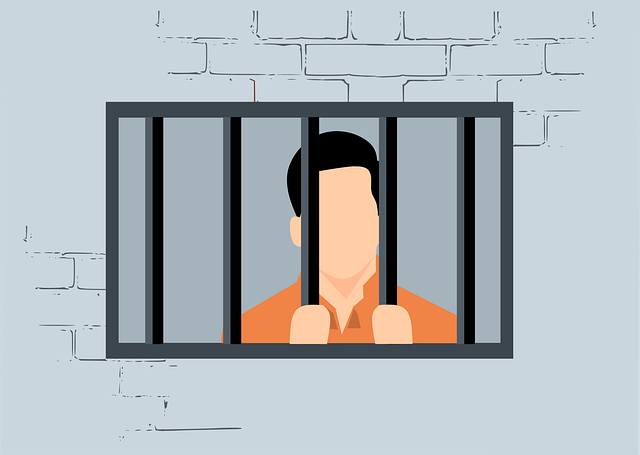This text explores the potential and challenges of Community Service as Punishment (CSP) as an alternative sentencing approach. It highlights loopholes in existing systems, emphasizing the need for clear definitions and equitable application of CSP to ensure justice. By addressing technicalities, disparities, and vague laws, policymakers can develop effective frameworks. Community service offers benefits like rehabilitation and reintegration but faces challenges such as variable program quality and accessibility. Success relies on strategic planning, collaboration, and regular monitoring. Case studies show its positive impact globally, transforming communities and reducing recidivism. The future of criminal justice favors restorative approaches, with CSP leading the way through data-driven best practices and continuous improvement.
In the pursuit of effective and just punishment systems, understanding loopholes is key. Many traditional approaches struggle to address specific gaps, leading to inconsistent outcomes. This article explores the role of community service as an alternative solution. We delve into identifying common loopholes in punishment structures and how community service can fill these voids. Through case studies and best practices, we highlight successful implementations while navigating potential challenges. Discover why this approach is gaining traction as a future-proof strategy for community-focused punishment.
- Understanding Loopholes: Identifying Common Gaps in Punishment Systems
- Community Service as an Alternative: Benefits and Potential Challenges
- Effective Implementation: Strategies for Closing Loopholes with Community Service
- Case Studies: Success Stories of Using Community Service to Fill Gaps
- The Future of Punishment: Continuous Improvement and Best Practices
Understanding Loopholes: Identifying Common Gaps in Punishment Systems

Loopholes in punishment systems often go unnoticed, but they can create significant gaps in justice. These loopholes can arise from various factors, including vague laws, technicalities, and disparities in enforcement. For instance, one common gap is the lack of consistent standards for alternative punishments, such as community service. Community Service as Punishment (CSP) is a popular alternative to incarceration, but its effectiveness hinges on clear definitions and equitable application. Without specific guidelines, some jurisdictions may offer lenient sentences, missing opportunities for rehabilitation and community reintegration.
Identifying these gaps is crucial in ensuring fairness and accountability within the criminal justice system. By recognizing common pitfalls like inconsistent CSP practices, policymakers and practitioners can work towards closing these loopholes. This involves developing clear frameworks, providing adequate training, and promoting transparency. Such efforts are essential steps toward building a more just and effective punishment system that addresses both punishment and rehabilitation.
Community Service as an Alternative: Benefits and Potential Challenges

Community Service as an Alternative: Benefits and Potential Challenges
In many jurisdictions, community service is increasingly being explored as a viable alternative to traditional punishment methods, such as fines or imprisonment. This approach offers several advantages. Firstly, it provides an opportunity for individuals to give back to their communities while developing a sense of responsibility. By engaging in meaningful tasks like cleaning public spaces or assisting at local shelters, offenders can contribute positively to society and gain valuable skills or experiences that may help them rehabilitate and reintegrate.
However, there are also potential challenges to consider. One concern is the effectiveness of community service in achieving deterrence or rehabilitation goals compared to more conventional punishments. Additionally, ensuring that community service opportunities are accessible and meaningful for all offenders can be difficult, as programs vary widely in quality and availability. Biases or disparities within communities could also limit the benefits for certain groups, necessitating careful consideration and tailored strategies to make this alternative truly effective and equitable.
Effective Implementation: Strategies for Closing Loopholes with Community Service

Community service as punishment is a powerful tool for closing loopholes and addressing societal gaps. Its effective implementation involves strategic planning and community engagement. By assigning meaningful tasks to offenders, such as environmental clean-up or assisting local charities, communities can benefit from reduced recidivism rates. This approach not only addresses the immediate issue but also fosters a sense of responsibility and connection, teaching valuable lessons about contribution and accountability.
To ensure success, community service programs should be tailored to specific needs. Collaboration between law enforcement, non-profit organizations, and local government is key. By aligning service projects with community priorities, such as infrastructure development or social welfare initiatives, the impact is amplified. Regular monitoring and feedback mechanisms also play a crucial role in evaluating progress, ensuring the program remains relevant, and making necessary adjustments to maximize its benefits for both offenders and the wider community.
Case Studies: Success Stories of Using Community Service to Fill Gaps

Community service, often considered a form of punishment, has emerged as a powerful tool for addressing societal gaps. Case studies across various countries demonstrate its success in providing meaningful solutions. For instance, in urban areas plagued by youth delinquency, mandatory community service programs have shown promising results. Teens involved in minor offenses are assigned tasks like cleaning public spaces or assisting at local charities. This approach not only offers a sense of accountability but also fosters a deeper connection to the community, encouraging positive behavior changes.
These initiatives often involve partnerships between law enforcement, non-profit organizations, and community leaders. By leveraging existing resources and volunteers, communities can effectively fill gaps left by traditional systems. For example, in underserved neighborhoods, community service projects have led to improved access to education, health services, and recreational facilities. Such success stories highlight the potential of community service as a transformative force, healing social wounds and building stronger, more resilient communities.
The Future of Punishment: Continuous Improvement and Best Practices

In the evolving landscape of criminal justice, the future of punishment is shifting from punitive measures to restorative approaches that prioritize rehabilitation and reintegration. One such innovative concept gaining traction is Community Service as Punishment (CSP). CSP offers a unique opportunity for individuals to give back to their communities while learning valuable lessons about accountability and responsibility. By engaging in meaningful community work, offenders can contribute to social causes, foster a sense of ownership, and develop new skills that can aid in their long-term rehabilitation.
The success of CSP lies in its potential for continuous improvement and best practices. As the program is implemented and studied, key performance indicators (KPIs) such as recidivism rates, community satisfaction, and personal growth metrics can provide valuable insights. By adopting data-driven approaches and adapting practices based on these findings, criminal justice systems can ensure that CSP remains effective and relevant in reducing recidivism while fostering positive change within communities.
Community service as an alternative punishment offers a comprehensive solution for closing gaps in traditional justice systems. By focusing on rehabilitation, reintegration, and accountability, effective implementation strategies can ensure that community service meets its intended goals. As evidenced by successful case studies, this approach not only reduces recidivism but also fosters positive change within communities. Moving forward, continuous improvement and the adoption of best practices are essential to enhance the effectiveness of community service as a viable punishment option, ultimately contributing to safer and more harmonious societies.






